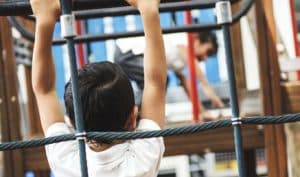
“It’s our polite nudge in the ribs to help you and your team stay organised and on task.”
This week’s subject is: Risky and open-ended play.
Element 3.2.2: Resources, materials and equipment allow for multiple uses, are sufficient in number, and enable every child to engage in play-based learning.
How is your environment, resources and equipment set up to encourage and support children of all ages to engage in safe and appropriately measured risky play?
Risk-taking is a natural and crucial part of children’s development. When educators provide an environment and resources that support children to engage in risky-play they support children in their overall development and the development of a range of fundamental skills including:
-
- building confidence and self-esteem whilst fostering growth mindset
- problem solving skills
- building resilience
- encourage creativity and resourcefulness
- develop motor skills
- develop visuospatial skills
- support their social emotional development
- use motor planning and sequencing skills to execute complex movements
- develop an understanding of “cause and effect”
- awareness of their own individual capabilities
Ensure you provide children with a variety of opportunities to take calculated risks that are appropriate to their age and level of development, allowing them to identify and mitigate risks within a safe learning environment.
Provide resources and spaces that invite and inspire children of different ages and capabilities to engage in play including:
-
- playing with sticks, rocks, trees, balancing on high objects, climbing and jumping
- rough and tumble play
- high speed opportunities- running, swinging, biking, scootering
- providing a range of ‘loose parts’ for play opportunities
- learning about fire through the use of safe fire pits
- using tools for cutting and building- hammers, saws, scissors
- balance beams at different heights to challenge children of differing ages
- experiences that challenge and enhance their skills and level of development
Resources:
Why risky play is important for young children
Loose Parts and Risky Play: Low-cost and sustainable ways to enhance the physical environment
The benefits of expanding our notion of risky play
Within System7 go to Quality Area 3/Module 10 to submit self-assessment notes and if required, open a QIP issue if you identify any areas of improvement.
The Childcare Centre Desktop has a range of resources to assist services with element 3.2.2. These include a selection of Risk Assessment Templates, Risk Assessment Guide and Procedure, Safety Checklists, Adventurous Play Policy and much more.
Resources, NQS Element, Regulation and System7 links:
Childcare Centre Desktop – Childcare Centre Desktop
National Quality Standard – QA 3/ 3.2.2- Resources support play-based learning
National Regulations – 73, 105, 113
System7 Module – QA 3/ Module 10
If you have any questions send us a note via the Contact page here!




